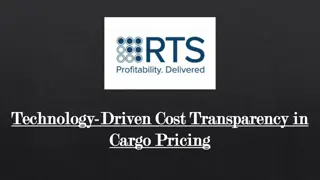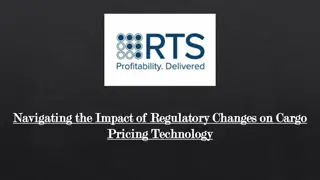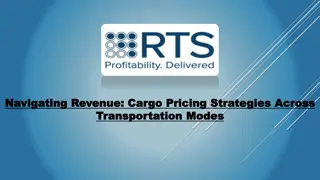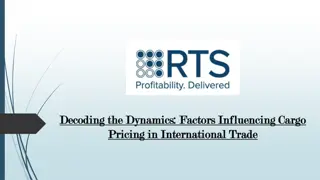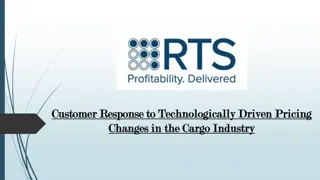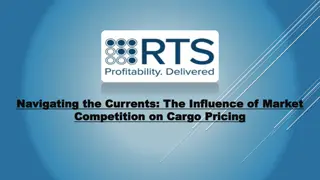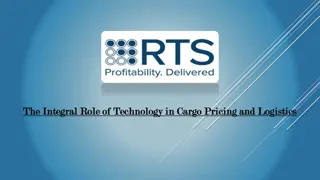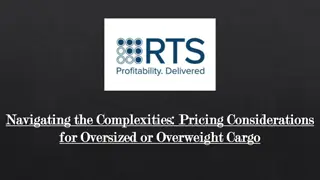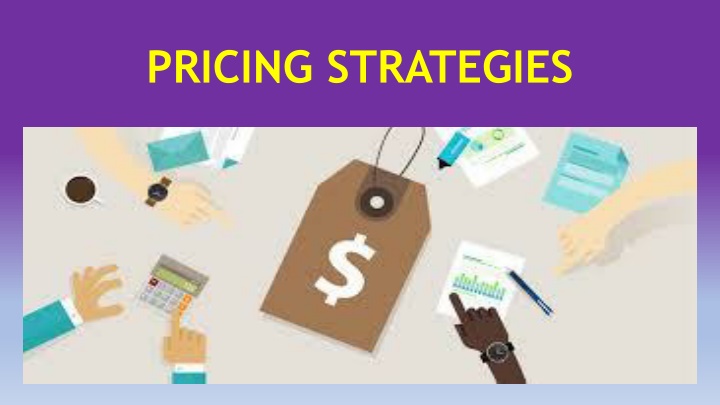
Various Pricing Strategies for Business Success
Learn about different pricing strategies including premium pricing, psychological pricing, penetration pricing, and more. Discover how these strategies can help businesses increase sales and maximize profits through effective pricing tactics.
Download Presentation

Please find below an Image/Link to download the presentation.
The content on the website is provided AS IS for your information and personal use only. It may not be sold, licensed, or shared on other websites without obtaining consent from the author. If you encounter any issues during the download, it is possible that the publisher has removed the file from their server.
You are allowed to download the files provided on this website for personal or commercial use, subject to the condition that they are used lawfully. All files are the property of their respective owners.
The content on the website is provided AS IS for your information and personal use only. It may not be sold, licensed, or shared on other websites without obtaining consent from the author.
E N D
Presentation Transcript
WHAT IS PRICING STRATEGY? Pricing strategy is the tactic that business uses to increase sales and maximize profits by selling their goods and services at an appropriate price. In short a pricing strategy is the method of pricing a business uses to determine how much to sell their goods or services for. This strategy takes into account the cost of the product as well as labor, advertising expenses, competitive pricing, trade margins, customers, and the overall market conditions to determine the sale price Pricing policy is the determination of what price a business will charge for a product or service. Pricing Policy vs Pricing Strategy Pricing strategy is the use of pricing policy to identify a product's or service's optimum price in the marketplace.
COMMON PRICING STRATEGIES PREMIUM PRICING PSYCHOLOGICAL PRICING PENETRATION PRICING COMMON STRATEGIES MARKET SKIMMING PREDATORY PRICING DIFFERENTIAL PRICING
PREMIUM PRICING Premium pricing, also referred to as "image pricing" or "prestige pricing," aims to display the quality and experience associated with a product, normally a unique product or brand that no one can compete with. Premium pricing is used to reflect quality, reputation and status - with the reinforcement of a high cost, people expect that they're paying the price for a reason. The price point is normally above standard market value to create a market perception that brings in further revenue a business has to work hard to create a perception of value. Along with creating a high-quality product, owners should ensure that the product s packaging, the store s decor, and the marketing strategy associated with the product are all combined to support the premium price.
PENETRATION PRICING The initial price is set relatively low with the intention of gaining rapid acceptance of the product. Aim to attract customers to a new product or services and penetrate as much market share as possible. Appropriate when close substitutes are available or when market is easy to enter. Penetration pricing can also be risky because it can result in an initial loss of income for the business - in the long run, after penetrating a market, business owners can increase prices to better reflect the state of the product s position within the market.
SKIMMING PRICING It is a kind of strategy that markets use by putting high initial prices for their products or services, and then lowering the price at later stages This strategy first focuses on the interested customers and when one group of customers (or interested customers) gets satisfied, the price of the product or service is lowered to attract other customers. This strategy is generally adopted by the organizations when a technological product is to be launched in the market. Price of such products remains at a high level until some other more advanced, developed or luxurious good of improved quality is introduced. Allows businesses to maximize profits on early adopters before dropping prices to attract more price-sensitive consumers .
DIFFERENTIAL PRICING The Differential Pricing is a method of charging different prices for the same type of a product and the same number of quantities to different customers. The companies adopt the differential pricing method with an objective to maximize the profit of an organization. . This strategy is also known as discriminatory pricing or multiple pricing. Basis of differential pricing: Product form (different price for different colour or add-ons) Customer segment (different fees for full time and part time student) Location (different ticket price for different location in cinema) Time (different price for raincoat different seasons, different price for early birds registration)
LOSS LEADER PRICING Application of an aggressive pricing strategy where products or services are sold below costs to stimulate sales of other profitable products or services to those customers. . Aims to attract new customers in the hope building a customer base and secure future recurring revenues. the greatest risk is that clients may only take advantage of the loss leader pricing and not use any of the business's other products and services. Example : Razor is sold at loss leader price with the hope that customer will buy more razor blades Smart phone sold at loss leader price when taking on contract package.
PREDATORY PRICING Predatory pricing, also known as undercutting, is a pricing strategy in which a company prices a product or service artificially low to gain new customers (loss leads), drive competitors out of the market, or create barriers to entry for new potential competitors. . In a predatory pricing scheme, prices are set low in an attempt to drive out competitors and create a monopoly. Consumers may benefit from lower prices in the short term, but they suffer if the scheme succeeds in eliminating competition, causing a rise in prices and a decline in choice.
PSYCHOLOGICAL PRICING Refers to techniques that businesses use to encourage customers to respond based on emotional impulses, rather than logical ones. Psychological pricing is the business practices of setting prices lower than a whole number - the idea behind is that customers will read the slightly lowered price and treat it lower than the price actually is. . An example of psychological pricing is an item that is priced RM3.99 but conveyed by the consumer as RM3 dollars and not RM4, treating RM3.00 as a lower price than RM4.00. It is designed to encourage customers buy more than they intend.
END OF PRICING DECISION






